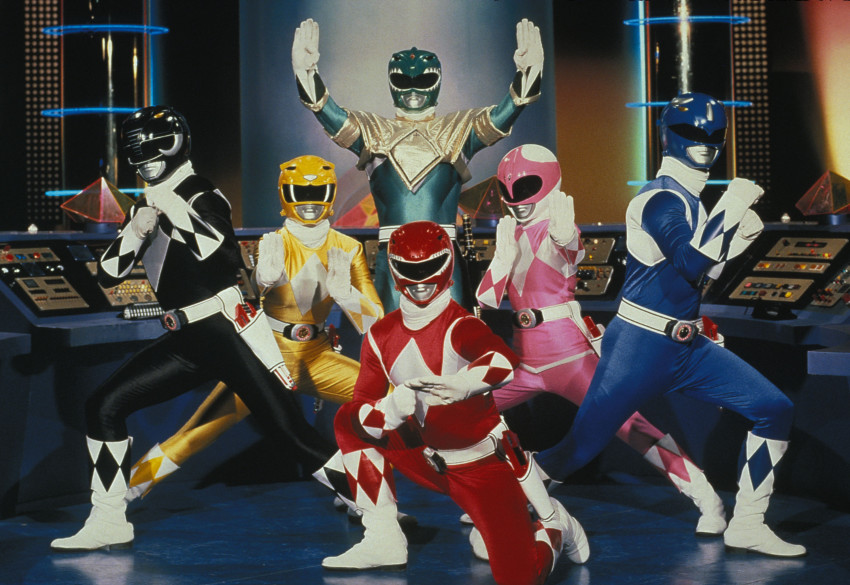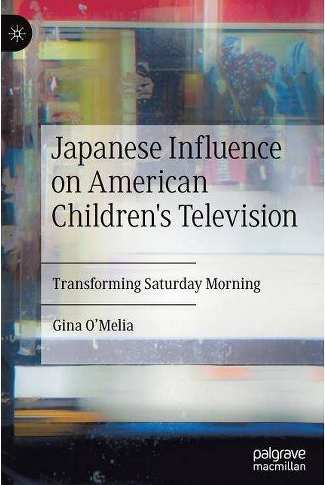Books: Japanese Influence on Kids’ TV
January 12, 2020 · 0 comments
By Jonathan Clements.
 “What was Saturday morning?” Dr Gina O’Melia asks innocently, upending a whole can of worms for young, millennial scholars who cannot see the resonance of those words. These days, with streaming, narrowcasting and pocket screens, every single waking moment can be “Saturday morning” if you want it to be. The idea of a free, untrammelled time, alone with the telly and without chores or obligations, has a note of twentieth-century nostalgia – O’Melia observes that “Saturday morning”, as Generation X remembers it, ceased to exist in 2014.
“What was Saturday morning?” Dr Gina O’Melia asks innocently, upending a whole can of worms for young, millennial scholars who cannot see the resonance of those words. These days, with streaming, narrowcasting and pocket screens, every single waking moment can be “Saturday morning” if you want it to be. The idea of a free, untrammelled time, alone with the telly and without chores or obligations, has a note of twentieth-century nostalgia – O’Melia observes that “Saturday morning”, as Generation X remembers it, ceased to exist in 2014.
But, in its glory days, she describes it as a great, invisible unifier of American children, “the only guaranteed time when television was especially their own,” a grand, nationwide block of programming that all could share, love and obsess about. She parses such unity not only in geographical terms, but across generations – sometimes the same old junk was still being repeated two decades later, creating common ground for parents and their children! But this is all a preamble for O’Melia’s main attraction: the arrival post-1993 of Japanese content that would radically alter the nature of children’s programming in America, starting with Mighty Morphin’ Power Rangers.
Her book, Japanese Influence on American Children’s Television: Transforming Saturday Morning, argues that in the two decades before its demise, Saturday morning kids’ programming became increasingly dominated by Japanese and Japanese-style programming, “…not a novelty like Godzilla or merely a niche product, but something that was able to keep a grasp on American children’s media for almost half of Saturday Morning’s entire airing history.” O’Melia is interested primarily in the phenomenology of these shows – like Liliane Lurçat, the first academic to write about Japanese TV abroad, her focus is on how they appeared in this context, dubbed and cut, not how they may have originally appeared in Japan. Rather sweetly, she apologises for this, as if she had already endured the complaints of one too many anime fan in her classroom for not talking about the original version of CardCaptors or Pokémon.
 I bring up Lurçat because she had her reasons – she was a psychologist, examining the reactions of young children to programmes that happened to be Japanese. O’Melia, however, argues for a series of inter-connected stylistic changes in children’s programming, as revealed through the growing number of shows brought over from Japan, and the growing number of shows that aped them. To a certain extent, she can get away with simply describing what she sees, and rarely explores the plans of the show-runners themselves. As Ishida and Kim’s recent book Archiving Movements pointed out, there are ways to actually investigate the motivations of writers, producers and directors – starting with tracking them down and asking them. A quote from writer J. Michael Straczynzki, for example, adds true weight to O’Melia’s arguments about The Real Ghostbusters, but it is repeated from an online interview, and sadly not matched by similar materials regarding other shows.
I bring up Lurçat because she had her reasons – she was a psychologist, examining the reactions of young children to programmes that happened to be Japanese. O’Melia, however, argues for a series of inter-connected stylistic changes in children’s programming, as revealed through the growing number of shows brought over from Japan, and the growing number of shows that aped them. To a certain extent, she can get away with simply describing what she sees, and rarely explores the plans of the show-runners themselves. As Ishida and Kim’s recent book Archiving Movements pointed out, there are ways to actually investigate the motivations of writers, producers and directors – starting with tracking them down and asking them. A quote from writer J. Michael Straczynzki, for example, adds true weight to O’Melia’s arguments about The Real Ghostbusters, but it is repeated from an online interview, and sadly not matched by similar materials regarding other shows.
O’Melia excels at explaining the context into which anime were released. In a run-down of 1970s Hanna-Barbera cartoons, she talks of the stock plots that would constantly recur. She plots an intriguing dynamic that shows how one show opens the door for another, suggesting that Teenage Mutant Ninja Turtles and Saved by the Bell both possessed elements that prepared the ground for Mighty Morphin’ Power Rangers. She points out that many of the viewers experiencing this change didn’t notice it, because it was building on earlier, subtle alterations, wedged into the schedule. “Once the Japanese [tropes] were the ‘wedges’ being built upon,” she writes, “they were no longer striking or exotic on Saturday Morning.” In other words, the shift went largely unnoticed because very few of the audience were still watching two years later.
O’Melia’s focus is largely on the reception end of broadcasting – these shows just sort-of happen. That’s all very well, but they happened for a reason, and she avoids discussing too many issues of ownership, production, distribution or exhibition. O’Melia does not stop to consider, for example, the possibility that an entire generation of young animators had now grown up watching anime. Certain non-Japanese producers, post-Pokémon, were indeed actively reverse-engineering its success, asking what it was that made anime special and attempting to implement that – I know this because I was paid a lot of money to tell them (my experiences in those days form the basis of a workshop I occasionally teach). Instead, she focusses on some interesting areas within reception studies, particularly regarding the hybridity of global broadcasting. She notes that, like British television in days past, Japanese television has exerted a recognisable impact on American broadcasting, contrary to many scare-mongering claims that American media are being hurled at the world on one-way tickets.
O’Melia currently teaches at a community college, which gives her prose an approachable, fluent feel – she is readily able to communicate her ideas in a refreshingly breezy, chatty fashion. But her book is an odd anomaly, sneaked out by Palgrave Macmillan with zero fanfare, and seemingly lacking any endorsements, reviews or advertising. In that regard, I would suggest that she has been poorly served by a publisher which has also saddled the book with an awful cover and an unjustified price-tag of £56. Possibly such neglect also extended to editorial – someone really should have shut down her preposterous translations (shonen: “lit. small year”; manga “lit. unrestrained painting”), and her citations could have done with being more robust.
Her bibliography suggests that she has spent longer on the Internet than in the library, whereas at this level of academic enquiry (and for that price!), I would expect at least some statistical foundation and a timeline of productions to establish whether influences were real or merely possible. Her chapter on Pokémon, for example, would have benefited immensely from a reading of Pikachu’s Global Adventure, which actually quotes the decisions made by localisers to make it fit the American market. It is uncited here, as is The Anime Boom in the United States. If, as I suspect, the latter book was published after O’Melia handed in her manuscript, then that’s just plain bad luck, but the former has been available in print for the last fifteen years.
O’Melia’s real triumph comes with her identification of what she calls the “Japanese singularity” of 2011, a season in which no American-made programming aired at all in the Saturday morning slots. You can quibble a bit, if you like, about what constitutes “American-made”, but it’s a fascinating culmination of all the trending arguments she has been marshalling. But, once again, this is described more or less as a bunch of things that happened – there is little attempt, for example, to relate this to underlying structural influences, such as the fact that video anime in America experienced a catastrophic collapse in demand when the Pokémon generation aged out. As recounted elsewhere, much of the reason for that was a misguided attempt to sell TV shows on DVD – perhaps Japanese programming was consequently available at bargain-basement discounts for the 2011 season?
Whatever the reasons behind it all, O’Melia notes that thereafter “anime norms” are the norm all over Saturday morning television – moral ambiguities, strong female characters, and what-have-you. And she’s there to watch the very last “Saturday morning” cartoon broadcast on American network television, which is, fittingly, an episode of Yu-gi-oh on 27th September 2014. After that, Saturday mornings turn worthily “educational”, as the result of an FCC mandate that ultimately comes at the expense of fun.
Jonathan Clements is the author of Anime: A History. Japanese Influence on American Children’s Television: Transforming Saturday Morning is published by Palgrave Macmillan.
Leave a Reply